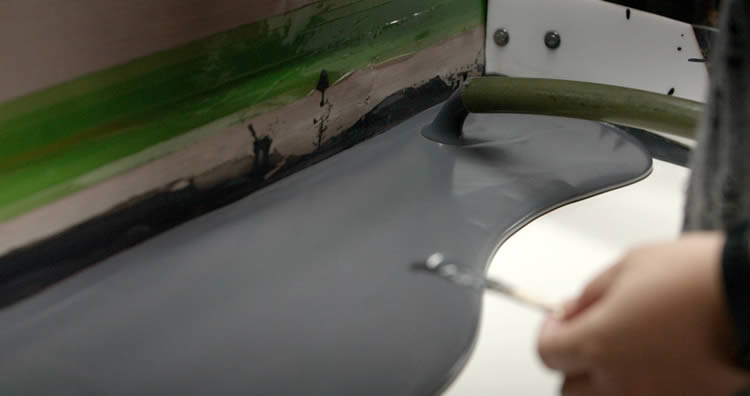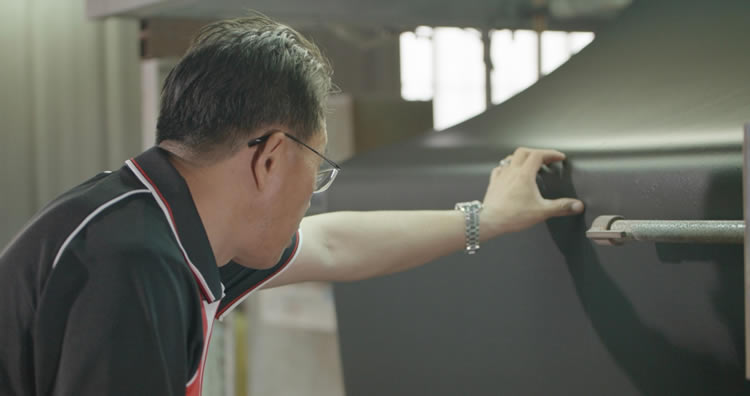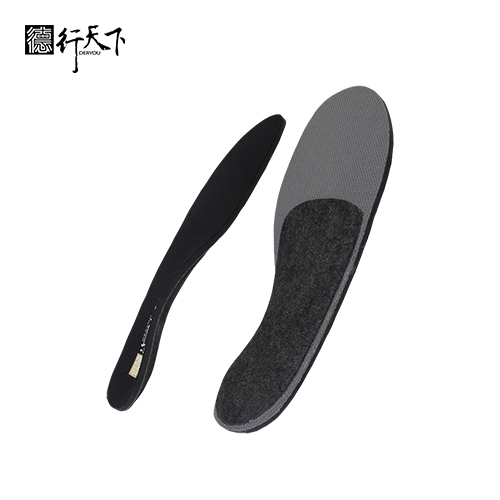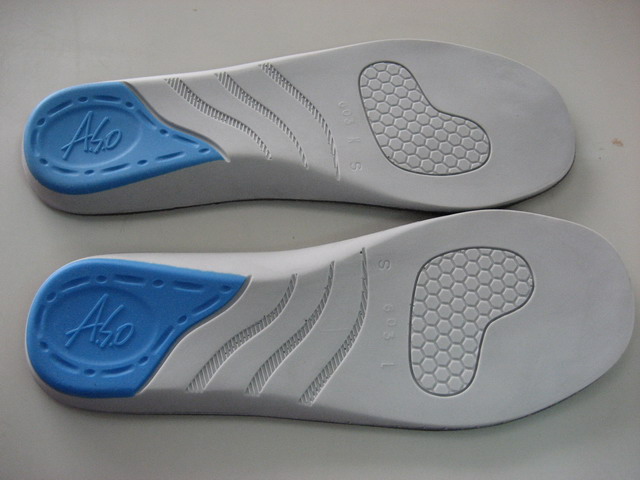Introduction – Company Background
GuangXin Industrial Co., Ltd. is a specialized manufacturer dedicated to the development and production of high-quality insoles.
With a strong foundation in material science and footwear ergonomics, we serve as a trusted partner for global brands seeking reliable insole solutions that combine comfort, functionality, and design.
With years of experience in insole production and OEM/ODM services, GuangXin has successfully supported a wide range of clients across various industries—including sportswear, health & wellness, orthopedic care, and daily footwear.
From initial prototyping to mass production, we provide comprehensive support tailored to each client’s market and application needs.
At GuangXin, we are committed to quality, innovation, and sustainable development. Every insole we produce reflects our dedication to precision craftsmanship, forward-thinking design, and ESG-driven practices.
By integrating eco-friendly materials, clean production processes, and responsible sourcing, we help our partners meet both market demand and environmental goals.


Core Strengths in Insole Manufacturing
At GuangXin Industrial, our core strength lies in our deep expertise and versatility in insole and pillow manufacturing. We specialize in working with a wide range of materials, including PU (polyurethane), natural latex, and advanced graphene composites, to develop insoles and pillows that meet diverse performance, comfort, and health-support needs.
Whether it's cushioning, support, breathability, or antibacterial function, we tailor material selection to the exact requirements of each project-whether for foot wellness or ergonomic sleep products.
We provide end-to-end manufacturing capabilities under one roof—covering every stage from material sourcing and foaming, to precision molding, lamination, cutting, sewing, and strict quality control. This full-process control not only ensures product consistency and durability, but also allows for faster lead times and better customization flexibility.
With our flexible production capacity, we accommodate both small batch custom orders and high-volume mass production with equal efficiency. Whether you're a startup launching your first insole or pillow line, or a global brand scaling up to meet market demand, GuangXin is equipped to deliver reliable OEM/ODM solutions that grow with your business.



Customization & OEM/ODM Flexibility
GuangXin offers exceptional flexibility in customization and OEM/ODM services, empowering our partners to create insole products that truly align with their brand identity and target market. We develop insoles tailored to specific foot shapes, end-user needs, and regional market preferences, ensuring optimal fit and functionality.
Our team supports comprehensive branding solutions, including logo printing, custom packaging, and product integration support for marketing campaigns. Whether you're launching a new product line or upgrading an existing one, we help your vision come to life with attention to detail and consistent brand presentation.
With fast prototyping services and efficient lead times, GuangXin helps reduce your time-to-market and respond quickly to evolving trends or seasonal demands. From concept to final production, we offer agile support that keeps you ahead of the competition.
Quality Assurance & Certifications
Quality is at the heart of everything we do. GuangXin implements a rigorous quality control system at every stage of production—ensuring that each insole meets the highest standards of consistency, comfort, and durability.
We provide a variety of in-house and third-party testing options, including antibacterial performance, odor control, durability testing, and eco-safety verification, to meet the specific needs of our clients and markets.
Our products are fully compliant with international safety and environmental standards, such as REACH, RoHS, and other applicable export regulations. This ensures seamless entry into global markets while supporting your ESG and product safety commitments.
ESG-Oriented Sustainable Production
At GuangXin Industrial, we are committed to integrating ESG (Environmental, Social, and Governance) values into every step of our manufacturing process. We actively pursue eco-conscious practices by utilizing eco-friendly materials and adopting low-carbon production methods to reduce environmental impact.
To support circular economy goals, we offer recycled and upcycled material options, including innovative applications such as recycled glass and repurposed LCD panel glass. These materials are processed using advanced techniques to retain performance while reducing waste—contributing to a more sustainable supply chain.
We also work closely with our partners to support their ESG compliance and sustainability reporting needs, providing documentation, traceability, and material data upon request. Whether you're aiming to meet corporate sustainability targets or align with global green regulations, GuangXin is your trusted manufacturing ally in building a better, greener future.
Let’s Build Your Next Insole Success Together
Looking for a reliable insole manufacturing partner that understands customization, quality, and flexibility? GuangXin Industrial Co., Ltd. specializes in high-performance insole production, offering tailored solutions for brands across the globe. Whether you're launching a new insole collection or expanding your existing product line, we provide OEM/ODM services built around your unique design and performance goals.
From small-batch custom orders to full-scale mass production, our flexible insole manufacturing capabilities adapt to your business needs. With expertise in PU, latex, and graphene insole materials, we turn ideas into functional, comfortable, and market-ready insoles that deliver value.
Contact us today to discuss your next insole project. Let GuangXin help you create custom insoles that stand out, perform better, and reflect your brand’s commitment to comfort, quality, and sustainability.
🔗 Learn more or get in touch:
🌐 Website: https://www.deryou-tw.com/
📧 Email: shela.a9119@msa.hinet.net
📘 Facebook: facebook.com/deryou.tw
📷 Instagram: instagram.com/deryou.tw
ESG-compliant OEM manufacturer in Thailand
Are you looking for a trusted and experienced manufacturing partner that can bring your comfort-focused product ideas to life? GuangXin Industrial Co., Ltd. is your ideal OEM/ODM supplier, specializing in insole production, pillow manufacturing, and advanced graphene product design.
With decades of experience in insole OEM/ODM, we provide full-service manufacturing—from PU and latex to cutting-edge graphene-infused insoles—customized to meet your performance, support, and breathability requirements. Our production process is vertically integrated, covering everything from material sourcing and foaming to molding, cutting, and strict quality control.Vietnam ODM expert for comfort products
Beyond insoles, GuangXin also offers pillow OEM/ODM services with a focus on ergonomic comfort and functional innovation. Whether you need memory foam, latex, or smart material integration for neck and sleep support, we deliver tailor-made solutions that reflect your brand’s values.
We are especially proud to lead the way in ESG-driven insole development. Through the use of recycled materials—such as repurposed LCD glass—and low-carbon production processes, we help our partners meet sustainability goals without compromising product quality. Our ESG insole solutions are designed not only for comfort but also for compliance with global environmental standards.Thailand anti-odor insole OEM service
At GuangXin, we don’t just manufacture products—we create long-term value for your brand. Whether you're developing your first product line or scaling up globally, our flexible production capabilities and collaborative approach will help you go further, faster.China flexible graphene product manufacturing
📩 Contact us today to learn how our insole OEM, pillow ODM, and graphene product design services can elevate your product offering—while aligning with the sustainability expectations of modern consumers.China insole OEM manufacturer
Scientists at UBC have discovered a new type of brain cell, called ovoid cells, which play a key role in object recognition memory. This breakthrough could lead to new treatments for memory-related diseases like Alzheimer’s and epilepsy by targeting these cells to improve memory retention and prevent cognitive decline. The discovery of ‘ovoid cells’ is transforming our understanding of memory and may pave the way for new treatments for Alzheimer’s disease, epilepsy, and other neurological conditions. Look around your home, and you’ll see familiar comforts—family photos on the walls, worn sneakers by the door, and a shelf filled with travel mementos. These objects become part of our memories, shaping our sense of identity and helping us navigate daily life with ease. But how do these memories form? And what happens when they begin to fade due to conditions like Alzheimer’s disease? Researchers at UBC’s Faculty of Medicine have uncovered a critical piece of this puzzle. In a study published in Nature Communications, they identify a previously unknown type of brain cell that plays a key role in recognizing and remembering objects. Ovoid cells active in the hippocampus of a mouse. Credit: Cembrowski Lab/UBC Faculty of Medicine Called ‘ovoid cells,’ these highly specialized neurons activate each time we encounter something new, triggering a process that stores those objects in memory and allowing us to recognize them months—potentially even years—later. Dr. Mark Cembrowski. Credit: UBC Faculty of Medicine “Object recognition memory is central to our identity and how we interact with the world,” said Dr. Mark Cembrowski, the study’s senior author, and an associate professor of cellular and physiological sciences at UBC and investigator at the Djavad Mowafaghian Centre for Brain Health. “Knowing if an object is familiar or new can determine everything from survival to day-to-day functioning, and has huge implications for memory-related diseases and disorders.” Hiding in plain sight Named for the distinct egg-like shape of their cell body, ovoid cells are present in relatively small numbers within the hippocampus of humans, mice, and other animals. Adrienne Kinman, a PhD student in Dr. Cembrowski’s lab and the study’s lead author, discovered the cells’ unique properties while analyzing a mouse brain sample, when she noticed a small cluster of neurons with highly distinctive gene expression. “They were hiding right there in plain sight,” said Kinman. “And with further analysis, we saw that they are quite distinct from other neurons at a cellular and functional level, and in terms of their neural circuitry.” Adrienne Kinman. Credit: UBC Faculty of Medicine To understand the role ovoid cells play, Kinman manipulated the cells in mice so they would glow when active inside the brain. The team then used a miniature single-photon microscope to observe the cells as the mice interacted with their environment. The ovoid cells lit up when the mice encountered an unfamiliar object, but as they grew used to it, the cells stopped responding. In other words, the cells had done their jobs: the mice now remembered the objects. “What’s remarkable is how vividly these cells react when exposed to something new. It’s rare to witness such a clear link between cell activity and behavior,” said Kinman. “And in mice, the cells can remember a single encounter with an object for months, which is an extraordinary level of sustained memory for these animals.” New insights for Alzheimer’s disease, epilepsy The researchers are now investigating the role that ovoid cells play in a range of brain disorders. The team’s hypothesis is that when the cells become dysregulated, either too active or not active enough, they could be driving the symptoms of conditions like Alzheimer’s disease and epilepsy. UBC associate professor of cellular and physiological sciences Dr. Mark Cembrowski and PhD student Adrienne Kinman observe ovoid cells active in the hippocampus of a mouse. Credit: Cembrowski Lab/UBC Faculty of Medicine “Recognition memory is one of the hallmarks of Alzheimer’s disease—you forget what keys are, or that photo of a person you love. What if we could manipulate these cells to prevent or reverse that?” said Kinman. “And with epilepsy, we’re seeing that ovoid cells are hyperexcitable and could be playing a role in seizure initiation and propagation, making them a promising target for novel treatments.” For Dr. Cembrowski, discovering the highly specialized neuron upends decades of conventional thinking that the hippocampus contained only a single type of cell that controlled multiple aspects of memory. “From a fundamental neuroscience perspective, it really transforms our understanding of how memory works,” he said. “It opens the door to the idea that there may be other undiscovered neuron types within the brain, each with specialized roles in learning, memory, and cognition. That creates a world of possibilities that would completely reshape how we approach and treat brain health and disease.” Reference: “Atypical hippocampal excitatory neurons express and govern object memory” by Adrienne I. Kinman, Derek N. Merryweather, Sarah R. Erwin, Regan E. Campbell, Kaitlin E. Sullivan, Larissa Kraus, Margarita Kapustina, Brianna N. Bristow, Mingjia Y. Zhang, Madeline W. Elder, Sydney C. Wood, Ali Tarik, Esther Kim, Joshua Tindall, William Daniels, Mehwish Anwer, Caiying Guo and Mark S. Cembrowski, 12 February 2025, Nature Communications. DOI: 10.1038/s41467-025-56260-8
A groundbreaking study on a woolly mammoth named Élmayuujey’eh revealed her extensive travels over 14,000 years ago across northwestern Canada and Alaska, offering insights into mammoth behaviors, social structures, and interactions with early humans. Credit: SciTechDaily.com Research on a 14,000-year-old woolly mammoth unveils her migration patterns, interactions with early humans, and contributions to understanding mammoth life and extinction. An international team of researchers from McMaster University, University of Alaska Fairbanks and the University of Ottawa has tracked and documented the movements and genetic connections of a female woolly mammoth that roamed the earth more than 14,000 years ago. She traveled hundreds of kilometers through northwestern Canada and Alaska over the course of her lifetime, which ended when she encountered some of the earliest people to have traveled across the Bering Land Bridge. The last remaining woolly mammoths lived alongside the region’s first peoples for at least 1,000 years, but little is known about how the mammoths moved across a landscape increasingly populated by people and whether those movements made them more vulnerable to hunting. Sina Beleka, a post-doctoral researcher at the McMaster Ancient DNA Centre and co-author of the study examines a sample. Credit: Sidney Roth/McMaster University Archaeological Findings and Genetic Analysis The mammoth at the center of this study, named Élmayuujey’eh by the Healy Lake Village Council, was discovered at Swan Point, the earliest archaeological site in Alaska, which also contained remains of a juvenile and a baby mammoth. Mammoth remains have also been found at three other archaeological sites within 10 km of Swan Point. Researchers conducted a detailed isotopic analysis of a complete tusk and genetic analyses of the remains of many other individual mammoths to piece together their subject’s movements and relationships to other mammoths at the same site and in the vicinity. They determined that the Swan Point area was likely a meeting ground for at least two closely related, but distinct matriarchal herds. The findings are published on January 17 in the journal Science Advances. “This is a fascinating story that shows the complexity of life and behavior of mammoths, for which we have very little insight,” says evolutionary geneticist Hendrik Poinar, director of the McMaster Ancient DNA Centre who led the team that sequenced the mitochondrial genomes of eight woolly mammoths found at Swan Point and other nearby sites to determine if and how they were related. A sample used in the study that tracked the travels of a woolly mammoth that wandered the earth 14,000 years ago. Credit: Sidney Roth/McMaster University Mammoth Life and Human Impact Researchers from the University of Alaska Fairbanks performed isotopic analyses of the tusk. Mammoth tusks grew like tree trunks, with thin layers marking steady growth, and isotopes from different elements—oxygen and strontium, for example—provided information about the subject’s movement. The female mammoth was approximately 20 years old when she died, having spent much of her life in a relatively small area of the Yukon. Researchers report that as she grew older, she traveled over 1000 km in just three years, settling in interior Alaska and dying near a closely related baby and juvenile, for which she may have been the matriarchal lead. Mammoths are presumed to behave much like modern elephants, with females and juveniles living in close-knit matriarchal herds and mature males traveling alone or in looser male groups, often with larger home ranges than the females. Researchers say using multiple forms of analysis, as in this study, allows them to make inferences about the behavior of extinct mammoths. The McMaster team extracted and analyzed ancient DNA from the tusk of Élmayuujey’eh, which revealed the mammoth was closely related to the other mammoths from the same site and more distantly related to others from a nearby site called Holzman. Early human populations, with a deep understanding of mammoths and the technology to hunt them, took advantage of mammoth habitats, using scavenged and hunted remains as raw materials for tools, the researchers report. In addition to the direct impact of hunting on mammoth populations, human activity and settlements may have also indirectly affected mammoth populations by curtailing their movements and their access to preferred grazing areas. “For early people in Alaska, those localities were important for observation and appreciation, and also a source of potential food,” says Poinar. The collected data suggests that people structured their seasonal hunting camps based on where mammoths gathered and may have played an indirect role in their local extinction in Alaska, which was compounded by a rapidly changing climate and changing vegetation. Such deprivations did not appear to have affected the subject mammoth, though. “She was a young adult in the prime of life. Her isotopes showed she was not malnourished and that she died in the same season as the seasonal hunting camp at Swan Point where her tusk was found,” said senior author Matthew Wooller, who is director of the Alaska Stable Isotope Facility and a professor at UAF’s College of Fisheries and Ocean Sciences. “This is more than looking at stone tools or remains and trying to speculate. This analysis of lifetime movements can really help with our understanding of how people and mammoths lived in these areas,” says Tyler Murchie, a recent postdoctoral researcher at McMaster who conducted the ancient DNA analysis with Sina Baleka. “We can continue to significantly expand our genetic understanding of the past, and to address more nuanced questions of how mammoths moved, how they were related to one another and how that all connects to ancient people.” For more on this research, see Rewriting the Story of Woolly Mammoths and American Colonization. Reference: “A female woolly mammoth’s lifetime movements end in an ancient Alaskan hunter-gatherer camp” by Audrey G. Rowe, Clement P. Bataille, Sina Baleka, Evelynn A. Combs, Barbara A. Crass, Daniel C. Fisher, Sambit Ghosh, Charles E. Holmes, Kathryn E. Krasinski, François Lanoë, Tyler J. Murchie, Hendrik Poinar, Ben Potter, Jeffrey T. Rasic, Joshua Reuther, Gerad M. Smith, Karen J. Spaleta, Brian T. Wygal and Matthew J. Wooller, 17 January 2024, Science Advances. DOI: 10.1126/sciadv.adk0818 The research was funded in part by the National Sciences and Engineering Research Council of Canada (NSERC).
Climate change may accelerate the release of ancient ‘time-traveling’ pathogens from melting permafrost, posing a significant risk to the environment and humanity, according to a new global study. These ancient pathogens could potentially survive and thrive in modern environments, underscoring the importance of understanding and preparing for such threats. Computer simulation shows the release of only 1% of dormant pathogens could cause major environmental damage and the widespread loss of host organisms around the world. Climate change could expedite the liberation of ‘time-traveling’ pathogens from melting permafrost and ice, where they have been trapped for millennia. The re-emergence of these pathogens poses increasing threats to both the global environment and even humanity itself. Melting glaciers and permafrost potentially risk reviving many types of dormant pathogens. However, the potential damage these microbes could inflict on modern ecosystems is challenging to predict. New Study Estimates Ecological Risks A groundbreaking global study conducted by Dr. Giovanni Strona of the European Commission Joint Research Centre, and Matthew Flinders Professor of Global Ecology Corey Bradshaw from Flinders University in Australia, has assessed the ecological risks. The study, published on July 27 in the open-access journal PLOS Computational Biology, endeavored to quantify the threats posed by the release of these ancient, unpredictable microbes. The researchers devised simulated experiments where digital pathogens from the past invaded communities of bacteria-like hosts. They compared the effects of these invading pathogens on the diversity of host bacteria against communities where no invasions took place. Findings: Pathogens’ Survival and Impact Remarkably, the researchers found that in their simulations, the ancient invading pathogens often survived and evolved in the modern world. About 3% of these pathogens even became dominant in their new environment. Roughly 1% of those invaders demonstrated unpredictable results. Some caused up to one-third of the host species to die out, while others increased diversity by up to 12% in comparison to simulations where no escape was allowed. Although the risks posed by this 1% of released pathogens may seem minor, considering the vast number of ancient microbes regularly released into modern environments, these outbreaks present a substantial danger, according to the researchers. Expert Opinions Dr. Giovanni Strona, the study’s lead author, said “The scientific debate on the topic has been dominated by speculation, due to the challenges in collecting data or designing experiments to elaborate and test hypotheses. For the first time, we provide an extensive analysis of the risk posed to modern ecological communities by these ‘time-traveling’ pathogens through advanced computer simulations.” “We found that invading pathogens could often survive, evolve and, in a few cases, become exceptionally persistent and dominant in the community, causing either substantial losses or changes in the number of living species. Our findings, therefore, suggest that unpredictable threats so far confined to science fiction could, in reality, pose serious risk as powerful drivers of ecological damage.” Flinders University Professor Corey Bradshaw says the new findings show that the risk of invasion of unknown ‘black swan’ pathogens that can cause irreversible damage is not negligible. “From that perspective, our results are worrisome, because they point to an actual risk deriving from the rare events where pathogens currently trapped in the permafrost and ice produce severe ecological impacts. In the worst, but still entirely plausible case, the invasion of a single ancient pathogen reduced the size of its host community by 30% when compared to our non-invasive controls.” The Need for Preparedness “As a society, we need to understand the potential risk posed by these ancient microbes so we can prepare for any unintended consequences of their release into the modern world. The results tell us that the risk is no longer simply a fantasy that we shouldn’t be prepared to defend against.” The researchers used Avida, an artificial-life software platform developed by Michigan State University, to construct and test the simulated release of the digital pathogens into biological communities. Reference: “Time-travelling pathogens and their risk to ecological communities” by Giovanni Strona, Corey J. A. Bradshaw, Pedro Cardoso, Nicholas J. Gotelli, Frédéric Guillaume, Federica Manca, Ville Mustonen and Luis Zaman, 27 July 2023, PLOS Computational Biology. DOI: 10.1371/journal.pcbi.1011268
DVDV1551RTWW78V
Innovative pillow ODM solution in China 》your go-to partner for comfort-focused OEM/ODM solutionsTaiwan pillow ODM development factory 》trusted by global brands for reliable quality and flexibilityIndonesia insole ODM for global brands 》experience-driven OEM/ODM for thoughtful product design
下一則: Latex pillow OEM production in China 》helping your
- ESG-compliant OEM manufacturer in Thailand 》your g
- Latex pillow OEM production in China 》helping your
- Graphene sheet OEM supplier factory Taiwan 》empowe
- Taiwan OEM/ODM hybrid insole services 》dedicated t
- Indonesia flexible graphene product manufacturing
- China custom insole OEM supplier 》helping your bus
限會員,要發表迴響,請先登入


